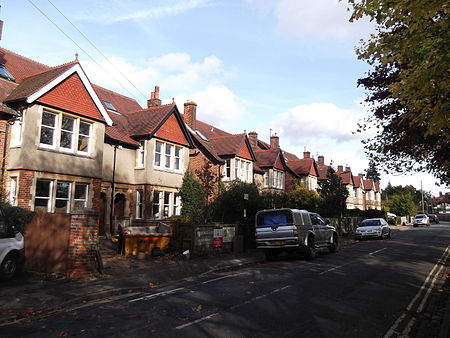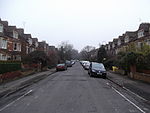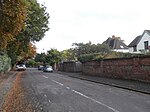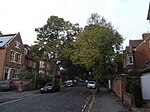Bainton Road

Bainton Road is a residential road in north Oxford, England.The road runs south–north and then west–east, skirting around the west and north sides of the St John's College playing field. At the eastern end is a junction with Woodstock Road (A4144), a major arterial road out of Oxford to the north. At the southern end is a junction with Frenchay Road. The road continues south as Hayfield Road. To the west is the Oxford Canal. N. W. Harrison, surveyor to the North Oxford building estate, laid out the road around the west and north side of the cricket ground of St John's College. The houses in Bainton Road were first leased between 1906 and 1931. Morris Motors made car radiators in a factory on Bainton Road. In September 1925, the MG Cars factory moved from the cramped facilities at Alfred Lane (Pusey Lane off Pusey Street since around 1927) in central Oxford to join the Radiator Branch at Bainton Road, within a partitioned area of the premises. The MG 14/28 car was manufactured at both sites between 1924 and 1927. The Holiday Caravan Company was also based in Bainton Road.The New Zealand writer, journalist and editor John Mulgan (1911–1945) lived at 5 Bainton Road. The Welsh academic, novelist and critic Raymond Williams (1921–1988) bought 47 Bainton Road from a colleague in 1960. The physicist, philosopher and author Danah Zohar has lived at 57 Bainton Road.
Excerpt from the Wikipedia article Bainton Road (License: CC BY-SA 3.0, Authors, Images).Bainton Road
Bainton Road, Oxford North Oxford
Geographical coordinates (GPS) Address Nearby Places Show on map
Geographical coordinates (GPS)
| Latitude | Longitude |
|---|---|
| N 51.7727 ° | E -1.2691 ° |
Address
Bainton Road 93
OX2 7AG Oxford, North Oxford
England, United Kingdom
Open on Google Maps









